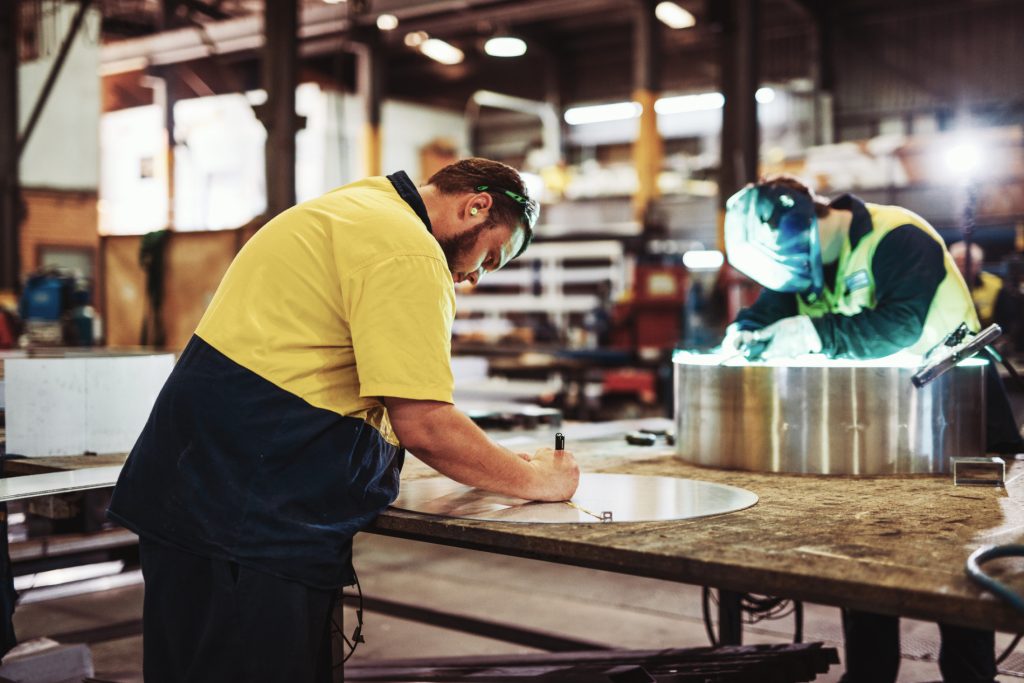Forging a Future of Equality and Innovation: The Role of Diversity in Construction
Within the realm of hard hats and blueprints, women embarking on construction careers face an array of obstacles that extend far beyond mere bricks and mortar. The struggles they encounter, including limited maternity leave policies, workplace harassment and the enduring gender wage gap underscore the significant disparities within the industry. According to the ABS in…
Within the realm of hard hats and blueprints, women embarking on construction careers face an array of obstacles that extend far beyond mere bricks and mortar. The struggles they encounter, including limited maternity leave policies, workplace harassment and the enduring gender wage gap underscore the significant disparities within the industry. According to the ABS in May 2023, Women in construction are currently earning $232.20 AUD less than men per week.
According to the ABC, construction stands as the most male-dominated industry in Australia, where women comprise just 13 per cent of the workforce. Of which, a mere 2 per cent are engaged in trades, while the remaining 11 per cent contribute in administrative and support capacities.
Working alongside the complex world of the construction industry; it becomes clear that change is not just essential—it’s imperative.
The gender disparities in the construction sector are far from superficial. Consider, for instance, the glaring issue of inadequate safety equipment for women. In a world where personal protection is paramount, the industry’s failure to acknowledge the diverse physiological requirements of its workforce is a glaring blind spot. Similarly, maternity leave policies remain an arena rife with inequality. The absence of adequate provisions for women navigating the dual roles of motherhood and career is emblematic of a systemic oversight that can no longer be ignored. And then there’s the pervasive issue of workplace harassment, an insidious force that not only marginalises women but also contributes to an environment where true gender parity seems distant.
Climbing the Ladder: Overcoming Barriers to Progress
The often repeated phrase “breaking the glass ceiling” feels particularly apt when discussing the uphill battle that women in construction face when it comes to career advancement. It’s not simply about individual ambition; it’s about dismantling deeply ingrained biases that govern hiring, promotion, and development opportunities. The scarcity of mentorship and sponsorship within the industry only serves to compound these challenges, stifling the organic growth of women in the industry. Tackling this problem requires a collective effort, necessitating active collaboration among employers, industry organisations, and policymakers to rectify these imbalances.
So, what needs to be done?
As we chart a course towards gender equality in the construction sector, it becomes evident that the solution lies in a multi-faceted approach. The need is to champion equal opportunities, shatter stereotypes, and obliterate discriminatory practices. Robust mentorship programs should be put in place to nurture burgeoning talent and foster professional growth. To truly effect change, we must also recognise the importance of work-life balance policies that empower both men and women to contribute meaningfully at home and in the workplace. Inclusivity, after all, isn’t just a buzzword—it’s the key to unlocking innovation and driving sustainable growth.
Forging Alliances: Advocacy and Networking
In a world where collaboration is king, the construction industry is no exception. Women entering the field, regardless of their roles, must strive to build bridges with those working at the grassroots. Establishing connections with the individuals who are the bedrock of the industry not only imparts a deeper understanding of the craft but also underscores a shared respect for each other’s contributions. Advocacy becomes a two-way street, with women advocating for themselves and their roles, while also garnering support from those who wield the tools and bring designs to life.
The Role of Women in Fieldwork
The National Association of Women in Construction (NAWIC) has a goal for women to make up 25 per cent of the industry by 2025. The prospects are tantalising—both for the women who seek fulfilling careers and for an industry grappling with labour shortages. Traditional norms may have confined women to administrative roles, but the symbiotic relationship between construction firms and female fieldworkers holds immense promise. As the industry continues to evolve, tapping into this potential can address the ongoing labour shortage while empowering women with the lucrative opportunities that skilled labour positions offer. It’s a win-win scenario that redefines the construction landscape.
Building a Future of Equality and Innovation
As the sun sets on the traditional narrative of a male-dominated construction industry, a new day dawns—one that champions inclusivity, equality, and innovation. The challenges women face within the industry are not insurmountable; they are opportunities to reshape norms and inspire change. Through collaborative efforts and a steadfast commitment to fostering a diverse workforce, the construction industry can unlock its full potential. The contributions of women, marked by skill, resilience, and dedication, will redefine the very foundation upon which this industry stands. By embracing gender equality, we’re not just breaking ground; we’re building a future of boundless possibilities.
Explore the transformative impact of diversity and inclusion initiatives in infrastructure with Fuse. If your company is ready to embrace change and support D&I efforts, reach out to us today. Let’s build a future of equality and innovation together!







